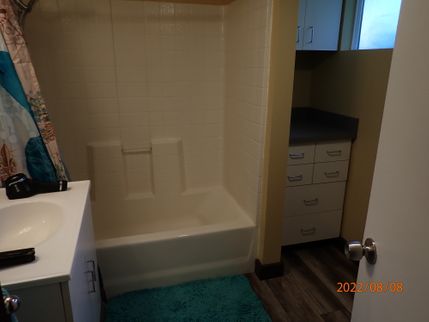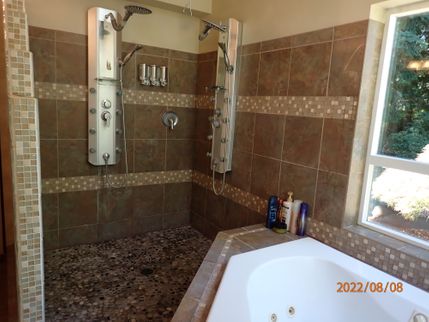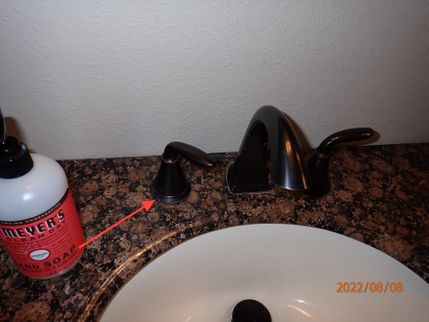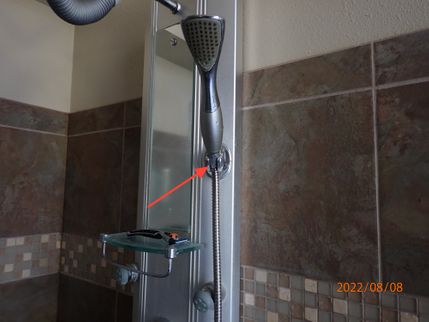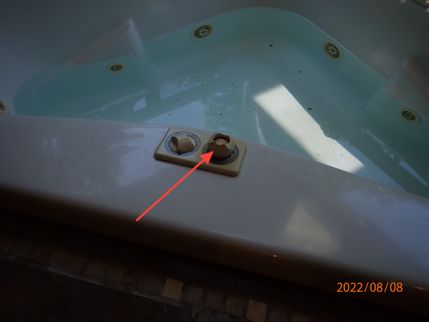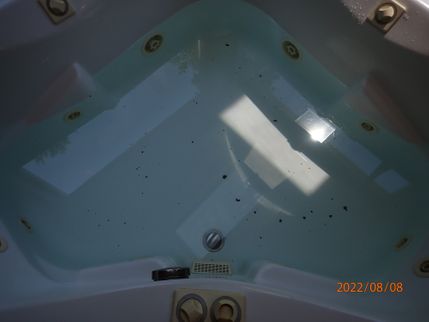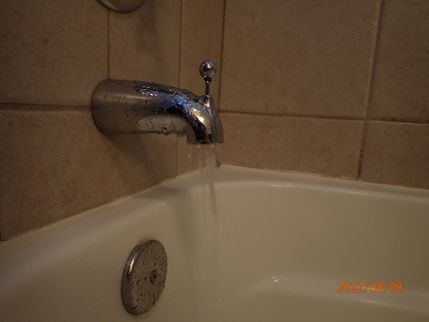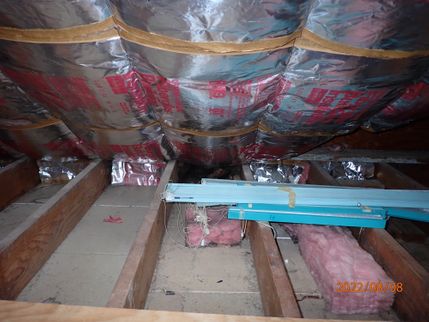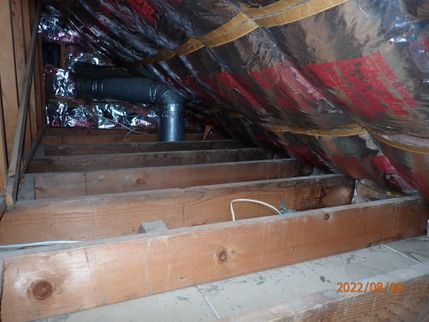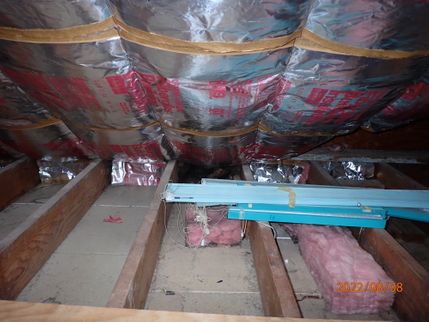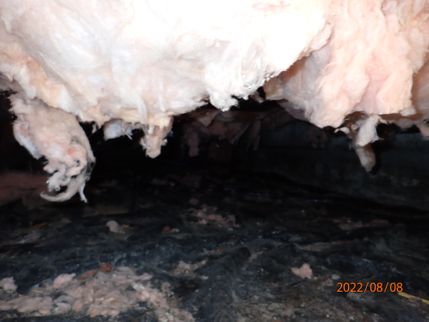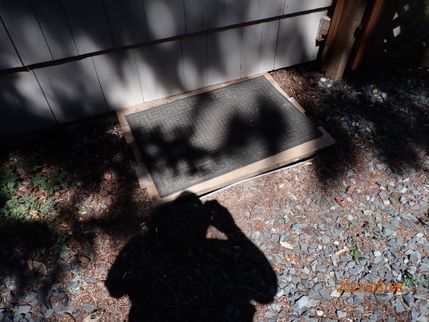The Scope and Purpose of a Home Inspection
Purchasing property involves risk
The purpose of a home inspection is to help reduce the risk associated with the purchase of a structure by providing a professional opinion about the overall condition of the structure. A home inspection is a limited visual inspection and it cannot eliminate this risk. Some homes present more risks than others. We cannot control this, but we try to help educate you about what we don’t know during the inspection process. This is more difficult to convey in a report and one of many reasons why we recommend that you attend the inspection.
A home inspection is not an insurance policy
This report does not substitute for or serve as a warranty or guarantee of any kind. Home warranties can be purchased separately from insuring firms that provide this service.
A home inspection is visual and not destructive
The descriptions and observations in this report are based on a visual inspection of the structure. We inspect the aspects of the structure that can be viewed without dismantling, damaging or disfiguring the structure and without moving furniture and interior furnishings. Areas that are concealed, hidden or inaccessible to view are not covered by this inspection. Some systems cannot be tested during this inspection as testing risks damaging the building. For example, overflow drains on bathtubs are generally not tested because if they were found to be leaking they could damage the finishes below. Our procedures involve non-invasive investigation and non-destructive testing which will limit the scope of the inspection.
This is not an inspection for code compliance
This inspection and report are not intended for city / local code compliance. During the construction process structures are inspected for code compliance by municipal inspectors. Framing is open at this time and conditions can be fully viewed. Framing is not open during inspections of finished homes, and this limits the inspection. All houses fall out of code compliance shortly after they are built, as the codes continually change. National codes are augmented at least every three years for all of the varying disciplines. Municipalities can choose to adopt and phase in sections of the codes on their own timetables. There are generally no requirements to bring older homes into compliance unless substantial renovation is being done.
This is just our opinion
Construction techniques and standards vary. There is no one way to build a house or install a system in a house. The observations in this report are the opinions of the home inspector. Other inspectors and contractors are likely to have some differing opinions. You are welcome to seek opinions from other professionals.
The scope of this inspection
This inspection will include the following systems: exterior, roof, structure, drainage, foundation, attic, interior, plumbing, electrical and heating. The evaluation will be based on limited observations that are primarily visual and non-invasive. This inspection and report are not intended to be technically exhaustive.
For more about the scope of a home inspection see: ASHI National Standards at https://www.homeinspector.org/Resources/Standard-of-Practice or Washington State Home Inspection Standards at http://app.leg.wa.gov/RCW/default.aspx?cite=18.280.030
Your expectations
The overall goal of a home inspection is to help ensure that your expectations are appropriate with the house you are proposing to buy. To this end we assist with discovery by showing and documenting observations during the home inspection. This should not be mistaken for a technically exhaustive inspection designed to uncover every defect with a building. Such inspections are available but they are generally cost-prohibitive to most homebuyers.
Your participation is requested
Your presence is requested during this inspection. A written report will not substitute for all the possible information that can be conveyed verbally by a shared visual observation of the conditions of the property.
How to Read This Report
Getting the Information to You
This report is designed to deliver important and technical information in a way that is easy for anyone to access and understand. If you are in a hurry, you can take a quick look at our "Summary Page” and quickly get critical information for important decision making. However, we strongly recommend that you take the time to read the full Report, which includes digital photographs, captions, diagrams, descriptions, videos and hot links to additional information.
The best way to get the layers of information that are presented in this report is to read your report online, which will allow you to expand your learning about your house. You will notice some words or series of words highlighted in blue and underlined – clicking on these will provide you with a link to additional information.
This report can also be printed on paper or to a PDF document.
Chapters and Sections
This report is divided into chapters that parcel the home into logical inspection components. Each chapter is broken into sections that relate to a specific system or component of the home. You can navigate between chapters with the click of a button on the left side margin.
Most sections will contain some descriptive information done in black font. Observation narrative, done in colored boxes, will be included if a system or component is found to be significantly deficient in some way or if we wish to provide helpful additional information about the system or the scope of our inspection. If a system or component of the home was deemed to be in satisfactory or serviceable condition, there may be no narrative observation comments in that section and it may simply say “tested,” or “inspected.”
Observation Labels
All narrative observations are colored, numbered and labeled to help you find, refer to, and understand the severity of the observation. Observation colors and labels used in this report are:
- Repair:Repair and maintenance items noted during inspection. Please note that some repair items can be expensive to correct such as re-finishing hardwood floors, but are considered simply repair items due to their cosmetic nature.
- Recommended Maintenance:These are repair items that should be considered "routine home ownership items," such as servicing the furnace, cleaning the gutters or changing the air filters in the furnace.
- Improve:Observations that are not necessarily defects, but which could be improved for safety, efficiency, or reliability reasons.
- Due Diligence:Observation such as a buried oil tank that may require further investigation to determine the severity and / or urgency of repair.
- Note:Refers to aside information and /or any comments elaborating on descriptions of systems in the home or limitations to the home inspection.
- Description:Detailed description of various aspects of the property noted during the inspection.
Summary Page
The Summary Page is designed as a bulleted overview of all the observations noted during inspection. This helpful overview is not a substitution for reading the entire inspection report. The entire report must be read to get a complete understanding of this inspection report as the Summary Page does not include photographs or photo captions.
Moisture Meter Testing
Where moisture meter testing is indicated in this report aMoisture Encounter Plus was used.
Summary
Repairs
- G1-2 Grounds:
Cracks were noted in walkway flatwork. No immediate repair appears necessary, though water will continue to deteriorate the surface until the walkway is repaired or replaced.
- G1-4 Grounds:
The step at the front porch exceeds 7-7.5". This could be a tripping hazard.
- G1-5 Grounds:
There are sections of fencing, around the pool that are loose. For safety reasons, repair is recommended.
- RCG-2 Roof, Chimney and Gutters:
Repairs are needed to the masonry chimney. The conditions noted here could increase the risk of moisture control problems related to the chimney. Neglecting maintenance on masonry chimneys can also lead to loose or damaged bricks and eventually a failing masonry system. Hire a licensed masonry contractor to further evaluate and repair the masonry chimney as recommended. Examples of observations noted during inspection include:
Chimney Caps
- The chimney is missing a proper rain cap for moisture control
- The chimney is missing a proper spark arrestor - these are important where wood burning fireplaces can allow embers to escape
- RCG-3 Roof, Chimney and Gutters:
Be sure that all downspouts are extended to drain as far away from the foundation as possible.
- EDFW-2 Electric Distribution and Finish Wiring:
Hire a licensed electrician to eliminate all open grounds. This is a common condition in older buildings (prior to 1962) where three prong receptacles have been installed on an older two wire system. This creates a safety hazard as it is false advertising; appliances that rely on an equipment ground to discharge a fault can be plugged into ungrounded circuits. This disables the important safety feature of an equipment ground. Proper repair can include:
- Running an equipment grounding conductor or a new three-wire circuit
- Filling the third prong of the receptacle or restoring a two-prong receptacle or
- Installing GFCI protection for this circuit and labeling the open ground receptacles
If GFCI protection is used, the outlets on this circuit should be labeled so it is clear they are ungrounded and GFCI protected. Examples of locations where open grounds were found include:
- HCFV-2 Heating, Cooling, Fireplaces and Ventilation:
The dryer vent, at the back of the home, has a cover, however, it needs some mesh to prevent insect nesting.
- HCFV-4 Heating, Cooling, Fireplaces and Ventilation:
Missing mortar and loose brick were noted in the fireplace firebox. This can make the fireplace unsafe for fires. Hire a mason or chimney sweep to further evaluate this condition and repair as needed to ensure safe and reliable performance from the fireplace. Firebox repairs need to be made using firebrick and proper refractory mortars designed for high temperatures.
- P2-4 Plumbing:
Testing of the plumbing system today, I noted the water was too hot - 148 degrees F. This is a scald hazard. To prevent scalding, standards recommend indoor hot water temperatures do not exceed 120 degrees. There is some evidence that hot water temperatures should be greater than 130 degrees to prevent Legionaries' disease from developing in the water heater. If this is a concern, you can heat the water in the tank to 140 degrees F and have a tempering valve installed at the hot water tank. Have this further evaluated and repaired by a licensed plumber or simply turn down the temperature as desired to eliminate a scald hazard.
- P2-6 Plumbing:
The exterior hose bib(s) are being controlled by a valve near the water shut in the basement. I believe that this is due to the fact that the bib at the front, has a stripped handle. I recommend having a plumbing contractor make all needed repair to include the updating of the bibs.
- I-2 Interior:
The ends of the hand rail should return into the wall to prevent clothing or accessories from catching on the end of the railing and creating a trip hazard.
- K-2 Kitchen:
The slab surface countertop is cracked and requires repair or replacement. Consult with a slab granite installer about options for repair. Please note that proper repair could necessitate countertop replacement, a significant expense. Temporary repairs can often be made with sealants, though this is obviously less cosmetically appealing.
- K-3 Kitchen:
An air gap is recommended to protect the dishwasher from accidental contamination if the sewer line were to back up. If an air gap cannot be installed, at least run the drain line above the level of the sink drain to create a high loop. This was an older way of protecting the dishwasher. Hire a licensed plumber to install an air gap.
- K-4 Kitchen:
I was only able to get the right 2 burners to ignite. The middle and left burners did not light. Have a small appliance technician assess and make any needed repair.
- MB1-2 Main Bathroom:
The hot water handle at the left sink was loose at the basin. Repair is needed.
- MB1-4 Main Bathroom:
The right shower handle is leaking where the hose connects to the shower head.
- MB1-5 Main Bathroom:
The button that controls the jets, is loose.
- GB2-2 Basement Bathroom:
The basement bath shower diverter, which diverts water from the tub fill spigot to the shower head, is leaky and requires repair to prevent wasting water and to improve flow to the shower head.
- A-2 Attic:
The insulation in the attic area has been installed in between the rafters and against the roof deck. This can lead to trapped moisture. In this age of home, typically, the interior attic walls are insulated and not the roof. I recommend having an insulation contractor assess and make any needed repair.
- CS-1 Crawl Space:
Overall, numerous repairs are needed to the crawl space below this house. I have made a series of detailed observations in this observations but given the extent of repairs I recommend further evaluation of this crawl space by a licensed general contractor who specializes in crawl space clean-up as additional repairs could be needed that are latent or concealed.
Examples of Observations Noted During Inspection Include:
- The crawl space access hatch is rotting and requires repair or replacement
- The access hatch for the crawl space does not look rodent proof.
- The sub-floor insulation is rodent-damaged and requires repair and replacement
Recommended Maintenance Items
- G1-3 Grounds:
Pruning trees, branches and vegetation away from the house is recommended. Where trees, branches and large shrubs can provide rodent access to the roof, a minimum 6-foot clearance is recommended as many rodents can jump 6-feet. All vegetation, including smaller landscaping such as grasses, flowers and shrubs should be kept 1-foot off the house to eliminate contact which could trap moisture against the building.
- RCG-1 Roof, Chimney and Gutters:
The NFPA (National Fire Protection Association) recommends an annual inspection of all chimneys, fireplaces, solid fuel-burning appliances, and vents. They also recommend an NFPA 211 Standard, Level II inspection upon sale or transfer of the property. A Level II inspection includes, not only cleaning the interior of the chimney pipe, but also the use of specialized tools and testing procedures such as video cameras, etc. to thoroughly evaluate the serviceability of the entire flue lining and fireplace/chimney system. Level II inspections are not always needed, especially for short simple flues that can be inspected visually after a cleaning. If a chimney cleaning has not been performed over the past 12 months, such an inspection is recommended before the home changes ownership---for fire safety reasons. Implement any repairs as recommended.
- MB1-6 Main Bathroom:
The jetted tub was filled and tested during inspection today. The jets performed well but algae was noted in the jets that contaminated the tub water during testing. Cleaning of the jets is needed to prevent this from happening.
Improves
- P2-5 Plumbing:
Older hose bibs were noted on this building. Updating the hose bibs is recommended. Modern hose bibs are typically "frost free," which are (arguably) more resistant to bursting in cold weather. They also have important vacuum breakers installed which can prevent water from your hoses backing into your water supply system. In the meantime, be sure to winterize your hose bibs during cold weather to prevent from freezing and consider adding a vacuum breaker to the end of the hose bib. The following video shows a vacuum breaker. https://www.youtube.com/watch?v=1vu_YMPPM2M
- I-3 Interior:
Some of the bedrooms in this house have older / missing escape and rescue openings - see the second floor bedroom's. Today, all bedrooms must have a second means of ingress and egress in case of emergency. This can be provided by a door but is typically provided by a window. Updating is recommended for improved safety, though updating is not a requirement. Unless there is a personal desire for these modern standards sooner, the logical time to improve this is during the next window replacement / updating.
Modern escape and rescue openings must comply with these basic guidelines:
- Minimum width of opening: 20 inches
- Minimum height of opening: 24 inches
- Minimum net clear opening at any grade floor level escape and rescue window: 5 square feet
- Minimum net clear opening of other escape and rescue windows: 5.7 square feet
- Maximum height of base of opening above interior side floor: 44 inches
- Windows should open easily without the use of keys or tools
And for window wells below grade:
- Minimum net clear area of 9 square feet
- Minimum horizontal projection and width of 36 inches
- Wells with a vertical depth greater than 44 inches require a permanent ladder or steps usable with the window in the fully open position
- LF-2 Laundry Facilities:
A moisture alarm with water shut-off features is recommended under the washing machine to protect against accidental leaks in the supply hoses. Pans can be effective when there is a drain, but even these will not protect against a burst supply connector. A moisture alarm with automatic shut-off will. Watts is a brand I have seen installed: Link.
- SB-1 Structure and Basement:
As always with older homes steps can be taken to improve the seismic stability of this home. Improvements include bolting the home to the foundation, adding sheer panels to pony walls and installing positive connections between posts and beams and posts and footings. Consult with a licensed general contractor or company specializing in seismic retrofits to further evaluate and improve the structure.
Due Diligences
- P2-1 Plumbing:
No water meter was found. This house seems to be on a public water system, which should have a metering device. Inquire with the seller or the utility as needed to locate the water meter.
- P2-2 Plumbing:
The main water pipe from the street to the home appears to be done with old galvanized steel pipe. This pipe could require updating at any time. Evaluation of this pipe is beyond the scope of this inspection as the pipe is not visible. Keep this pipe in mind for updating should you do any other digging in the front of the home between the house and the water meter.
✒
- Please also note that when updating older metal pipes, there is a risk of disabling important grounding systems for your electrical service. During updates to older metal pipes, consider having your electrical grounding and bonding systems further investigated and repaired as recommended by a licensed electrical contractor.
- P2-3 Plumbing:
A video camera sewer scope is recommended. An evaluation of the sewer line below the ground is beyond the scope of this inspection. Due to the age and location of the building, a sewer scope is recommended to further evaluate the sewer line and the below ground connections between the house and the municipal sewer line. Sewer scopes are done using video cameras and can reveal the materials, condition and reliability of the sewer line. If that has been done recently, I recommend having a sewer scope performed.
- AP-1 Additional Plumbing:
Swimming pools are not within the scope of a residential home inspection and they are beyond the scope of this inspection. Still, there are general minimal rules that should be followed to provide safe conditions at these areas since these areas can be dangerous for children and adults.
Limit Access for Safety: Though not required in all jurisdictions, pools should be completely surrounded by fencing material at least 4 feet in height. A slatted fence should have gaps no wider that 4 inches so kids can’t squeeze through. The gap at the bottom should be less than 2 inches, unless over concrete where is should be less than 4 inches. Gates should be of the self-closing and self-latching type. The latch should be out of a child’s reach.
It is also recommended to install alarms. If the house serves as one of the walls of the pool enclosure, any door leading to the pool area should be protected with an alarm. In addition, consideration of an underwater pool alarm that sounds when something hits the water and is audible at the house interior is recommended. Pools covers may be permitted by some jurisdictions, but they don’t provide the passive protection that other alarm features may provide.
Wiring Safety: Pools have electrical connections to pumps, heaters and lighting systems. All pool wiring is required to be GFCI protected and all metal in or around the pool is required to be bonded. These systems can be nearly impossible to verify. However, having a full evaluation of the pool wiring by a qualified electrical contractor is recommended, especially during a real estate transaction.
It is recommended that this pool and the related equipment and electrical systems be inspected for operation and safety by a pool specialist.
Notes
- EDFW-1 Electric Distribution and Finish Wiring:
During inspection I test all Ground Fault Circuit Interrupter (GFCI) devices that are readily accessible. GFCI's are those electric receptacles with re-set buttons that you commonly see in bathrooms, kitchens and at the exterior of the home. GFCI's are important safety devices that limit the duration of electrical shocks and have demonstrably saved lives. I recommend being aware of where re-set buttons are located in the house as GFCI's can trip and disable a circuit which can not be re-energized without re-setting the button. I avoid testing to determine if a receptacle or circuit is GFCI protected if it is not clear where the re-set button can be found. This is because re-set buttons can be concealed behind stored items, so such a test risks disabling a circuit in the home. Occasionally, during testing of GFCI's one can fail. This is a statistical reality that some of these devices will fail under testing and require replacement after testing.
- MB1-3 Main Bathroom:
The jetted tub in the main bath was filled and tested during inspection today.
📃 The Complete Inspection Report
General Comments
Building Characteristics, Conditions and Limitations
Approximate Square Footage: 3362
Approximate Year of Original Construction: 1960
Unless the wiring in the building has been fully updated, this building likely has wiring that predates the late 1980's. Branch circuit wiring installed in buildings built prior to the late 1980s is typically rated for a maximum temperature of only 60 degrees Celsius. This includes non-metallic sheathed (Romex) wiring, and both BX and AC metal-clad flexible wiring. Knob and tube wiring, typically installed in homes built prior to 1950, may be rated for even lower maximum temperatures. Newer electric fixtures including lighting and fans typically require wiring rated for 90 degrees Celsius. Connecting newer fixtures to older, 60-degree-rated wiring is a potential fire hazard. Repairs for such conditions may involve replacing the last few feet of wiring to newer fixtures with new 90-degree-rated wire, and installing a junction box to join the old and new wiring. It is beyond the scope of this inspection to determine if any such incompatible components are installed. Based on the age of this building, be aware that such components may be present.
In 1978, federal laws were passed to prohibit use of lead and asbestos in building materials. Manufacturers of building materials were allowed to sell existing stocks of materials that were manufactured with lead and asbestos, so even buildings constructed as late as the mid-1980's could possibly contain lead or asbestos. Identification and testing for lead and asbestos and other environmental testing is beyond the scope of this home inspection. If you wish to seek additional information, I recommend contacting an environmental lab or industrial hygienist.
Attending the Inspection: Buyer and Buyer's Agent
Occupancy: Occupied
Animals Present: No
Weather during the inspection: Clear
Approximate temperature during the inspection: Over 80[F]
Ground/Soil surface conditions: Dry
This home was occupied at the time of the inspection. Inspection of occupied homes presents some challenges as occupant belongings can obstruct visual inspection of and access to parts of the building. We do our best during inspection to work around belongings to discover as much as possible about the house without moving or damaging personal property, however, the presence of personal items does limit the inspection.
Grounds
Drainage and Site
Clearance to Grade: Standard
Downspout Discharge: Above grade
Site Description: Flat
Driveways/Walkways/Flatwork
Driveway: Concrete, Gravel
Walkways: Concrete
Patios: Concrete
Grounds, Trees and Vegetation
Trees/Vegetation too near building: Yes - Prune Vegetation off House
Pruning trees, branches and vegetation away from the house is recommended. Where trees, branches and large shrubs can provide rodent access to the roof, a minimum 6-foot clearance is recommended as many rodents can jump 6-feet. All vegetation, including smaller landscaping such as grasses, flowers and shrubs should be kept 1-foot off the house to eliminate contact which could trap moisture against the building.
Exterior Stairs
Exterior Stairs: Standard
Exterior Siding, Doors and Windows
Siding and Trim
Trim Material: Wood
Siding Material: Combed Cedar Shingles
This building is siding in places using a combed cedar shingle siding. This is a classic mid-century era siding that is typically installed with lots of shingle to the weather and in two layers, so there is usually a second layer of shingles behind the top layer. This is a high quality old wood siding system. Re-painting can sometimes be frustrating as peeling paint can be difficult to scrape off without damaging the combed appearance of the shingles.
Eaves
Plywood
Exterior Doors
Exterior Door Styles: Solid core, Glass panel doors
Exterior Window Frames
Window Frames: Vinyl
Decks, Porches and Balconies
Wood Decks Porches and Balconies
Present
To see a prescriptive guide for residential wood deck construction click this link:
Structure: Ground contact treated lumber
Ledger Board: Not visible
Guardrail: None needed
Decking Material: Wood.
Posts, Beams and Footings: Not Visible
Concrete Decks, Stoops, Landings and Porches
Concrete Structure: Concrete back porch
Roof, Chimney and Gutters
Roof Materials
Method of Roof Inspection: Ground
Roof Style: Gable
Flashings, Valleys and Penetrations: Present and Visually Standard
Roof flashings are used to keep a roofing system waterproof where the roofing material starts, stops, changes direction or is penetrated. During inspection, we look for standard flashing techniques that could be considered normal or standard in our region. Damaged, incomplete or non-standard flashings can be a sign of an older or less reliable roofing system and may require repair. Any non-standard flashings noted during inspection will be reported on below if found.
Roof Covering Materials: Architectural grade composition shingle
Approximate Age of Roof Covering: 5-10 Years
Overlay Roof: No
Chimneys
Present
Chimney Material: Masonry
Repairs are needed to the masonry chimney. The conditions noted here could increase the risk of moisture control problems related to the chimney. Neglecting maintenance on masonry chimneys can also lead to loose or damaged bricks and eventually a failing masonry system. Hire a licensed masonry contractor to further evaluate and repair the masonry chimney as recommended. Examples of observations noted during inspection include:
Chimney Caps
- The chimney is missing a proper rain cap for moisture control
- The chimney is missing a proper spark arrestor - these are important where wood burning fireplaces can allow embers to escape
The NFPA (National Fire Protection Association) recommends an annual inspection of all chimneys, fireplaces, solid fuel-burning appliances, and vents. They also recommend an NFPA 211 Standard, Level II inspection upon sale or transfer of the property. A Level II inspection includes, not only cleaning the interior of the chimney pipe, but also the use of specialized tools and testing procedures such as video cameras, etc. to thoroughly evaluate the serviceability of the entire flue lining and fireplace/chimney system. Level II inspections are not always needed, especially for short simple flues that can be inspected visually after a cleaning. If a chimney cleaning has not been performed over the past 12 months, such an inspection is recommended before the home changes ownership---for fire safety reasons. Implement any repairs as recommended.
Fuel Storage and Distribution
Gas Meter
Present
Gas Shutoff Location: Front of the structure.
Electric Service
Electric Service
Service Entrance: Above Ground
Meter Base Amperage: 200
Electric Service Equipment
Service Entrance (SE) conductor Size: Aluminum, 4/0, 200 amps
Main Panel Amperage: 200 amps
Electric Service Amperage: 200 amps
Main Electric Panel Location: Basement
Panel Manufacturer: Siemens
Electrical Grounding System
Grounding Rod Noted
Ground rod connections were noted at the exterior. The ground rods looked to be fully driven and connections looked standard,
Electrical Bonding System
Bonding Noted on Gas Pipes
Bonding connections were noted on the gas piping.
Electric Distribution and Finish Wiring
Branch Wiring
Wire Material: Copper
Wiring Method: Non-metallic sheathed cable
Receptacles and Fixtures
Inspection Method: Representative Testing
A representative number of receptacles and switches were tested during inspection. Any defects found during inspection are noted in this report. Only visible and accessible receptacles and switches were tested during inspection and personal items and furnishings are not moved to access any receptacles or fixtures.
Electric Receptacles: Three wire and two wire receptacles
Hire a licensed electrician to eliminate all open grounds. This is a common condition in older buildings (prior to 1962) where three prong receptacles have been installed on an older two wire system. This creates a safety hazard as it is false advertising; appliances that rely on an equipment ground to discharge a fault can be plugged into ungrounded circuits. This disables the important safety feature of an equipment ground. Proper repair can include:
- Running an equipment grounding conductor or a new three-wire circuit
- Filling the third prong of the receptacle or restoring a two-prong receptacle or
- Installing GFCI protection for this circuit and labeling the open ground receptacles
If GFCI protection is used, the outlets on this circuit should be labeled so it is clear they are ungrounded and GFCI protected. Examples of locations where open grounds were found include:
During inspection I test all Ground Fault Circuit Interrupter (GFCI) devices that are readily accessible. GFCI's are those electric receptacles with re-set buttons that you commonly see in bathrooms, kitchens and at the exterior of the home. GFCI's are important safety devices that limit the duration of electrical shocks and have demonstrably saved lives. I recommend being aware of where re-set buttons are located in the house as GFCI's can trip and disable a circuit which can not be re-energized without re-setting the button. I avoid testing to determine if a receptacle or circuit is GFCI protected if it is not clear where the re-set button can be found. This is because re-set buttons can be concealed behind stored items, so such a test risks disabling a circuit in the home. Occasionally, during testing of GFCI's one can fail. This is a statistical reality that some of these devices will fail under testing and require replacement after testing.
Smoke and Carbon Monoxide Alarm Systems
CO Alarms Noted: On Main Floor
On Main Floor On 2nd Floor
On 2nd Floor In Basement
In Basement
Smoke Alarms Noted: On Main Floor
On Main Floor On 2nd Floor
On 2nd Floor In All Bedrooms
In All Bedrooms
Heating, Cooling, Fireplaces and Ventilation
Heating System
Energy Source: Natural gas
Heating Method: Gas forced air furnace
This house has a gas forced air furnace. A critical component to all combustion heating equipment is the heat exchanger. This is the welded metal assembly inside the furnace that contains the products of combustion so that moisture, carbon monoxide and other products of combustion do not mix with interior air and get safely vented to the exterior. Heat exchangers on modern furnaces have an average life expectancy of 15-20 years. Unfortunately, heat exchangers are concealed inside the heating equipment; they are not visible and specifically excluded from a home inspection. Cracks in heat exchangers may be concealed and can pose a potential safety hazard.
Manufacturer: York
Capacity: 100,000 btu's
Age: 2010
Last Service Record: 7/2022
Vents and Flues
Air Filters
Filtration Systems: Disposable
The heating system has disposable air filters installed. These should be changed quarterly or more to ensure proper air flow at the furnace. Be sure to install the filters with the arrows pointing in the same direction as the air flow in the furnace.
Heating and Cooling Distribution Systems
Heat Source in Each Room: Present
Distribution Method: Forced Air / Ducts, Wall Mounted Forced Air Electric Heaters
Mechanical Ventilation Systems
Bath Fan Ducting: Ductwork not visible
Determining proper ventilation to the exterior from kitchen, bath and laundry fans can be tricky as exhaust fan ductwork is often concealed behind finishes and fan terminations can be all over the house from the roof to the foundation, presenting difficulties for systematically checking every fan termination. During inspection, every effort is made to verify proper terminations of fan vents to the exterior, but it is possible to miss something here that is latent or concealed.
Kitchen Fan Ducting: Ducted to exterior
Solid Fuel Fireplaces
Missing mortar and loose brick were noted in the fireplace firebox. This can make the fireplace unsafe for fires. Hire a mason or chimney sweep to further evaluate this condition and repair as needed to ensure safe and reliable performance from the fireplace. Firebox repairs need to be made using firebrick and proper refractory mortars designed for high temperatures.
Plumbing
Water Meter
Not Found - Inquire With Seller
No water meter was found. This house seems to be on a public water system, which should have a metering device. Inquire with the seller or the utility as needed to locate the water meter.
Water Service Supply
Pipe Material: Galvanized
Water Supply: Public water
Water Pressure: Water Pressure Tested, 35 PSI
This shows the water pressure tested during inspection. Generally, "normal water pressure," should be between 30-80 PSI, though pressures near or below 30 can result in poor functional flow to fixtures. Water pressures in excess of 80 PSI risk damaging supply piping components and should be controlled with a pressure reducing valve.
Pressure Reducing Valve: None noted
Main Water Shut-off Location: Basement
The main water pipe from the street to the home appears to be done with old galvanized steel pipe. This pipe could require updating at any time. Evaluation of this pipe is beyond the scope of this inspection as the pipe is not visible. Keep this pipe in mind for updating should you do any other digging in the front of the home between the house and the water meter.
✒
- Please also note that when updating older metal pipes, there is a risk of disabling important grounding systems for your electrical service. During updates to older metal pipes, consider having your electrical grounding and bonding systems further investigated and repaired as recommended by a licensed electrical contractor.
Distribution Pipe
Supply Pipe Materials: Copper, Galvanized Steel
Copper water supply pipes were installed. Copper pipes installed prior to the late 1980's may be joined with solder that contains lead, which is a known health hazard especially for children. Laws were passed in 1985 prohibiting the use of lead in solder, but prior to that solder normally contained approximately 50% lead. Note that testing for toxic materials such as lead, is beyond the scope of this inspection. Consider having a qualified lab test for lead, and if necessary take steps to reduce or remove lead from the water supply. Various solutions include:
- Flush water taps or faucets. Do not drink water that has been sitting in the plumbing lines for more than 6 hours
- Install appropriate filters at points of use
- Use only cold water for cooking and drinking, as hot water dissolves lead more quickly than cold water
- Treat well water to make it less corrosive
- Have a qualified plumber replace supply pipes and/or plumbing components as necessary
Please note that when old galvanized steel pipe is eventually replaced, be sure to have the electrical bonding and grounding system evaluated and repaired / updated as needed by a licensed electrical contractor. It is common to update old metal piping using plastic piping. This can have the unintended consequence of disrupting important electrical grounding and bonding systems.
Functional Flow: Average
Circulation Pump: None Noted
Waste Pipe and Discharge
Discharge Type: Public Sewer - Buyer
Waste and Vent Pipe Materials: ABS plastic
A video camera sewer scope is recommended. An evaluation of the sewer line below the ground is beyond the scope of this inspection. Due to the age and location of the building, a sewer scope is recommended to further evaluate the sewer line and the below ground connections between the house and the municipal sewer line. Sewer scopes are done using video cameras and can reveal the materials, condition and reliability of the sewer line. If that has been done recently, I recommend having a sewer scope performed.
Water Heater
System Type: Tank
Manufacturer: Bradford-White
Size: 50 gal
Age: Bradford White (N = 2016)
Energy Source: Gas
Straps : Present
Expansion Tank: Present
Relief Valve: Present - Not Tested
The temperature and pressure relief valve is arguably one of the most important safety devices in your house. Should the thermostats fail inside your water heater, this allows excess pressure to "blow off," which will prevent catastrophic build up of temperature and pressure which can make water heaters explosive. I do not test the "blow off valve" during inspection as there is a risk it could stick open and testing could cause the need for a repair. It is recommended that these be inspected annually; I would at least ask for a plumber to test the device every time I had a plumber out for any other job.
Water Temperature
Water Temperature Measured During Inspection: Testing Note, 148 Degrees F
The water temperature was tested multiple times during inspection. It is common for water temperatures to fluctuate throughout the house depending on the distance from the water heater, the water heater settings, the type of water heater and any thermostatic controls used in the plumbing fixtures and mixing valves. For reporting, the median temperature is used.
Testing of the plumbing system today, I noted the water was too hot - 148 degrees F. This is a scald hazard. To prevent scalding, standards recommend indoor hot water temperatures do not exceed 120 degrees. There is some evidence that hot water temperatures should be greater than 130 degrees to prevent Legionaries' disease from developing in the water heater. If this is a concern, you can heat the water in the tank to 140 degrees F and have a tempering valve installed at the hot water tank. Have this further evaluated and repaired by a licensed plumber or simply turn down the temperature as desired to eliminate a scald hazard.
Exterior Hose Bibs
Update to Frost Free
The exterior hose bib(s) are being controlled by a valve near the water shut in the basement. I believe that this is due to the fact that the bib at the front, has a stripped handle. I recommend having a plumbing contractor make all needed repair to include the updating of the bibs.
Older hose bibs were noted on this building. Updating the hose bibs is recommended. Modern hose bibs are typically "frost free," which are (arguably) more resistant to bursting in cold weather. They also have important vacuum breakers installed which can prevent water from your hoses backing into your water supply system. In the meantime, be sure to winterize your hose bibs during cold weather to prevent from freezing and consider adding a vacuum breaker to the end of the hose bib. The following video shows a vacuum breaker. https://www.youtube.com/watch?v=1vu_YMPPM2M
Additional Plumbing
Swimming Pools
Swimming pools are not within the scope of a residential home inspection and they are beyond the scope of this inspection. Still, there are general minimal rules that should be followed to provide safe conditions at these areas since these areas can be dangerous for children and adults.
Limit Access for Safety: Though not required in all jurisdictions, pools should be completely surrounded by fencing material at least 4 feet in height. A slatted fence should have gaps no wider that 4 inches so kids can’t squeeze through. The gap at the bottom should be less than 2 inches, unless over concrete where is should be less than 4 inches. Gates should be of the self-closing and self-latching type. The latch should be out of a child’s reach.
It is also recommended to install alarms. If the house serves as one of the walls of the pool enclosure, any door leading to the pool area should be protected with an alarm. In addition, consideration of an underwater pool alarm that sounds when something hits the water and is audible at the house interior is recommended. Pools covers may be permitted by some jurisdictions, but they don’t provide the passive protection that other alarm features may provide.
Wiring Safety: Pools have electrical connections to pumps, heaters and lighting systems. All pool wiring is required to be GFCI protected and all metal in or around the pool is required to be bonded. These systems can be nearly impossible to verify. However, having a full evaluation of the pool wiring by a qualified electrical contractor is recommended, especially during a real estate transaction.
It is recommended that this pool and the related equipment and electrical systems be inspected for operation and safety by a pool specialist.
Interior
Floors and Floor Materials
Floor Settlement: None noted
Walls, Ceilings, Trim, Hallways and Closets
Wall and Ceiling Materials: Drywall
Wall Insulation and Air Bypass
Wall Insulation: Not Visible
Stairs and Railings
Non-standard, Handrail (No Wall Returns)
Interior Doors
Interior Doors: Hollow Core
Windows
Window Glazing: Double pane
Interior Window Frame: Vinyl
Window Styles: Casement, Sliding, Single hung
Some of the bedrooms in this house have older / missing escape and rescue openings - see the second floor bedroom's. Today, all bedrooms must have a second means of ingress and egress in case of emergency. This can be provided by a door but is typically provided by a window. Updating is recommended for improved safety, though updating is not a requirement. Unless there is a personal desire for these modern standards sooner, the logical time to improve this is during the next window replacement / updating.
Modern escape and rescue openings must comply with these basic guidelines:
- Minimum width of opening: 20 inches
- Minimum height of opening: 24 inches
- Minimum net clear opening at any grade floor level escape and rescue window: 5 square feet
- Minimum net clear opening of other escape and rescue windows: 5.7 square feet
- Maximum height of base of opening above interior side floor: 44 inches
- Windows should open easily without the use of keys or tools
And for window wells below grade:
- Minimum net clear area of 9 square feet
- Minimum horizontal projection and width of 36 inches
- Wells with a vertical depth greater than 44 inches require a permanent ladder or steps usable with the window in the fully open position
Kitchen
Sinks and Faucets
Tested
Cabinets and Countertops
Countertop Material: Slab Surface
Cabinet Material: Wood
The slab surface countertop is cracked and requires repair or replacement. Consult with a slab granite installer about options for repair. Please note that proper repair could necessitate countertop replacement, a significant expense. Temporary repairs can often be made with sealants, though this is obviously less cosmetically appealing.
Disposers
Disposer: Operated
Dishwasher
Dishwasher: Operated
Dishwasher Air Gap: None noted
An air gap is recommended to protect the dishwasher from accidental contamination if the sewer line were to back up. If an air gap cannot be installed, at least run the drain line above the level of the sink drain to create a high loop. This was an older way of protecting the dishwasher. Hire a licensed plumber to install an air gap.
Ventilation Method
Fan Ducted to Exterior
Ranges, Ovens and Cooktops
Range/ Oven /Cook-tops: Gas
Refrigerators
Refrigerator: Operating
General Kitchen Condition
Standard
Laundry Facilities
Washer
Tested
During inspection I try and run the clothes washing machine. This is mostly so that I can push water down the drain to test the waste piping system. Running the clothes washer during an inspection is not a reliable test of the appliance. I am not actually doing a load of laundry, so please note the limitations of this test.
A moisture alarm with water shut-off features is recommended under the washing machine to protect against accidental leaks in the supply hoses. Pans can be effective when there is a drain, but even these will not protect against a burst supply connector. A moisture alarm with automatic shut-off will. Watts is a brand I have seen installed: Link.
Dryer
Tested
Proper dryer exhaust venting is critical for safe and reliable performance from the dryer. Here are some basic rules of thumb for dryer exhaust duct installation: Unless a vent-free appliance is being used, the dryer exhaust vent must terminate outdoors. It should be no more than 25 feet long and for every 90 degree turn subtract 5 feet and for every 45 degree bend subtract 2.5 feet. Use only smooth-wall metal vent pipe @ 4 inch pipe diameter. Do not use plastic pipe and plastic flex pipe. If a flexible connector is needed behind the dryer use a short amount of corrugated metal pipe. If the exhaust duct is getting pinched behind dryer, consider use of a dryer vent box, pictured here. Flex and corrugated pipes should never be used in concealed spaces such as through walls or in attic or crawl spaces. Insulate dryer exhaust duct where it passes through unconditioned spaces to prevent condensation that could hasten lint build-up inside the pipe. Do not use screws to connect pipe as these can trap lint. Secure duct with foil tape as needed. Be sure duct is sleeved properly so that it will not trap lint and clean the vent regularly, especially if it is a long exhaust run.
Power Source: Electric
Exhaust Duct: Ducted to Exterior
Powder Bathroom
Sinks and Cabinets
Tested
Toilet
Tested
Bathroom Ventilation
Type: Bath fan
General Bath Condition
Standard
Family Bathroom
Sinks and Cabinets
Tested
Toilet
Tested
Bathtub / Shower
Tested
Bathroom Ventilation
Type: Bath fan, Operable window
General Bath Condition
Standard
Main Bathroom
Sinks and Cabinets
Tested
Toilet
Tested
Bathtub / Shower
Tested
The jetted tub was filled and tested during inspection today. The jets performed well but algae was noted in the jets that contaminated the tub water during testing. Cleaning of the jets is needed to prevent this from happening.
Bathroom Ventilation
Type: Bath fan
General Bath Condition
Standard
Basement Bathroom
Sinks and Cabinets
Tested
Toilet
Tested
Bathtub / Shower
Tested
Bathroom Ventilation
Type: Bath fan, Operable window
General Bath Condition
Standard
Attic
Attic Access
Viewed at access
Roof Framing and Sheathing
Rafters: 2x6
Sheathing: Not visible
Attic Insulation
Insulation Type: Fiberglass
Approximate Insulation R-Value on Attic Ceiling: 30
The insulation in the attic area has been installed in between the rafters and against the roof deck. This can lead to trapped moisture. In this age of home, typically, the interior attic walls are insulated and not the roof. I recommend having an insulation contractor assess and make any needed repair.
Attic and Roof Cavity Ventilation
Attic Ventilation Method: Ridge vents
Crawl Space
General Crawl Space
Crawl Space: Present
Overall, numerous repairs are needed to the crawl space below this house. I have made a series of detailed observations in this observations but given the extent of repairs I recommend further evaluation of this crawl space by a licensed general contractor who specializes in crawl space clean-up as additional repairs could be needed that are latent or concealed.
Examples of Observations Noted During Inspection Include:
- The crawl space access hatch is rotting and requires repair or replacement
- The access hatch for the crawl space does not look rodent proof.
- The sub-floor insulation is rodent-damaged and requires repair and replacement
Crawl Space Access
Method of Inspection: Viewed at access
Vapor Barrier
Vapor Barrier Material: Plastic on earth
Crawl Space Ventilation
Ventilation Method: Exterior wall vents
Posts and Footings
Standard
Insulation
Insulation Type: Fiberglass
Approximate R-Value: R-19
Moisture Conditions
No water was visible or present at the time of inspection
Structure and Basement
Foundation
% of Foundation Not Visible: 70%
Evidence of Seismic Protection: None Found - Old House
Building Configuration: Basement, Crawl space
Foundation Description: Poured concrete
As always with older homes steps can be taken to improve the seismic stability of this home. Improvements include bolting the home to the foundation, adding sheer panels to pony walls and installing positive connections between posts and beams and posts and footings. Consult with a licensed general contractor or company specializing in seismic retrofits to further evaluate and improve the structure.
Floor, Wall and Ceiling Framing
Wall Framing: Not visible
Wall Sheathing: Not visible
Floor Framing: Partly visible
Sub-Floor Material: Not visible
Ceiling Framing: 2x6
Basement
Full
Basement Moisture
None noted
Checking Out Procedure
Check Out List
Oven: Off
Off
Lights: Off
Off
Heating and Cooling: Restored to Pre-inspection temperatures
Restored to Pre-inspection temperatures
Appliances: Off / finishing cycle
Off / finishing cycle
Receipt -- 📃 The Complete Inspection Report
Somewhere in Milton WA
| Inspection Fee | $600.00 |
| $600.00 | |
| PAID |
South Sound Inspection
C/O Robert Jones
4227 South Meridian
Puyallup, WA 98373
253-820-9650


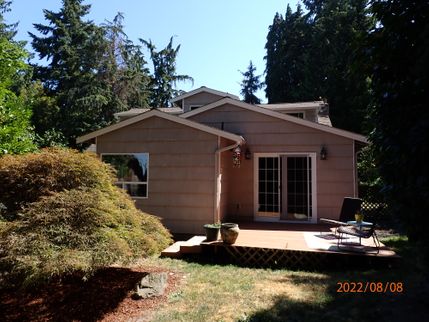
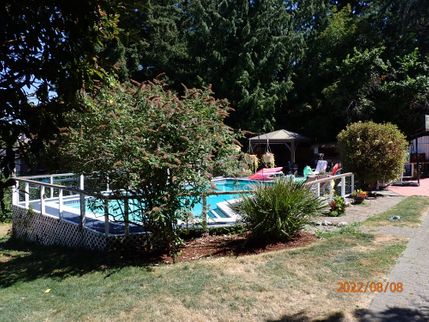
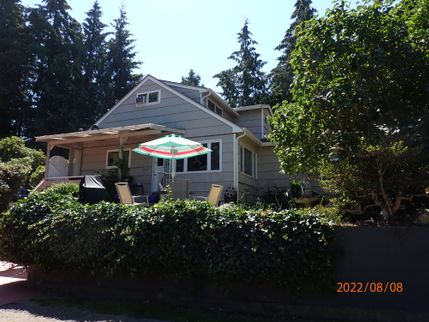
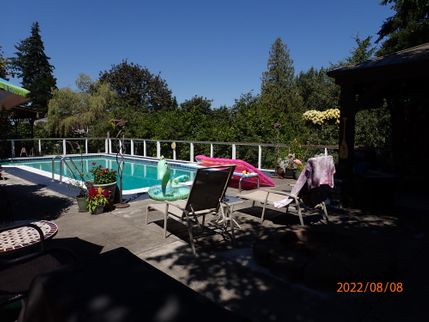


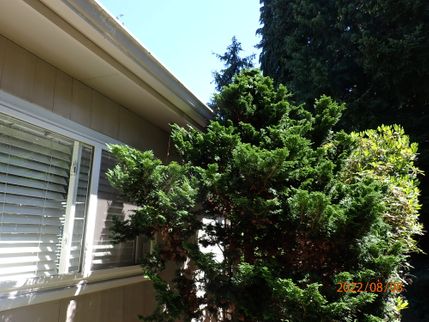
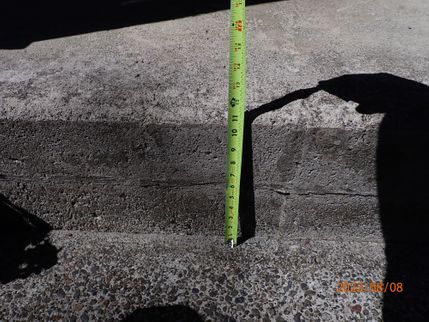
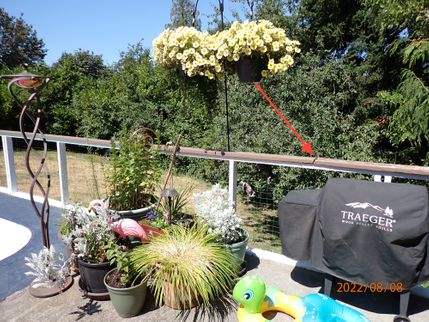
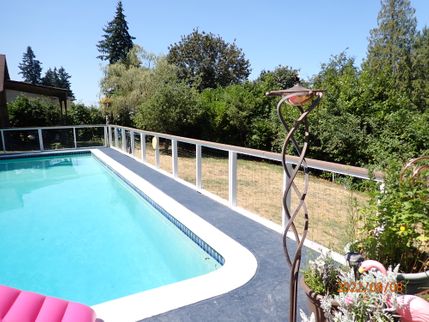

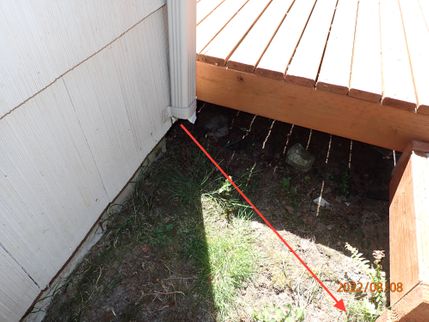

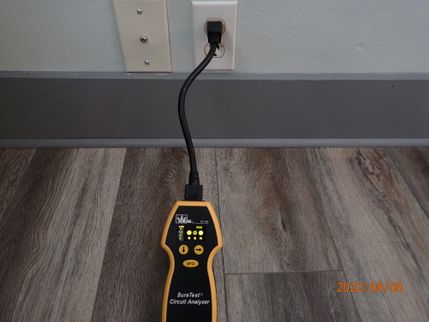
 (1) (1).png)
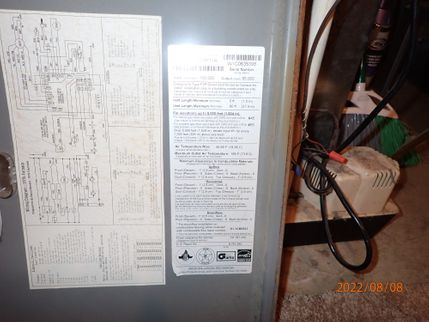
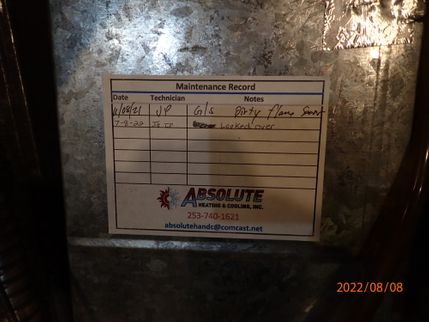
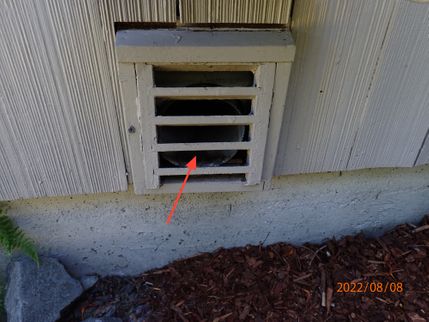

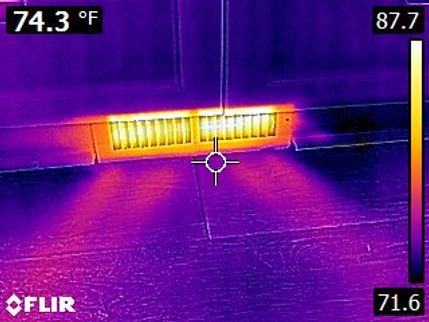

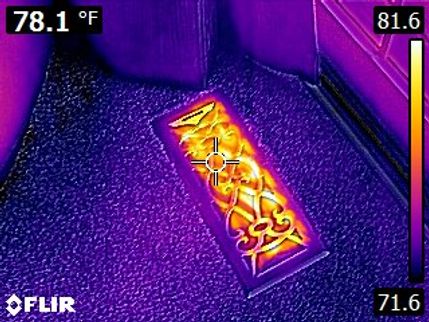
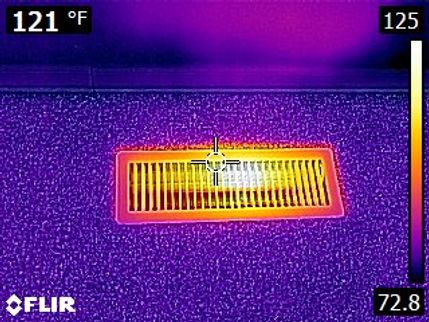
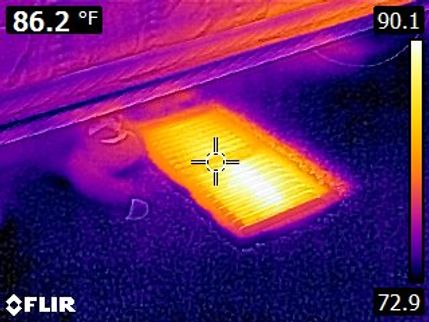
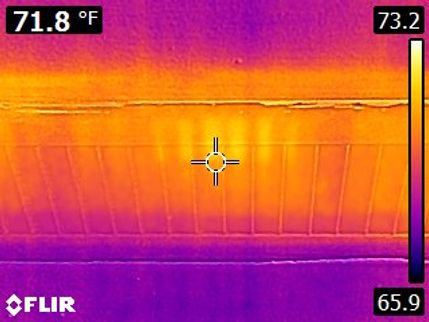
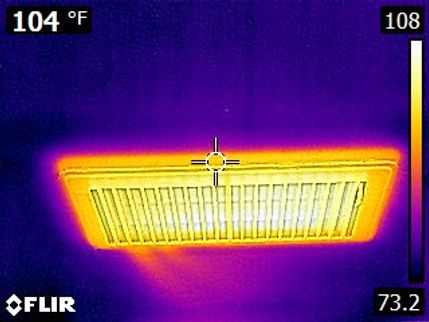

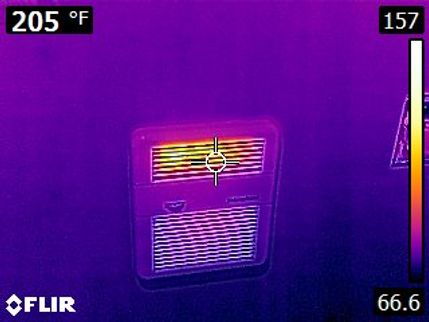



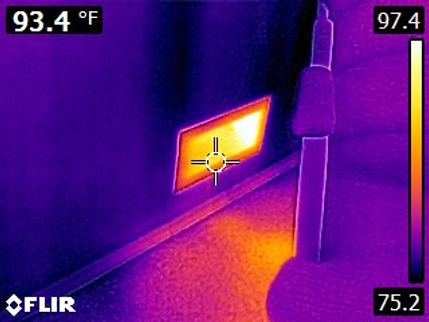
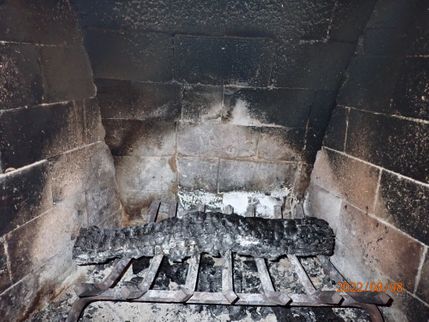
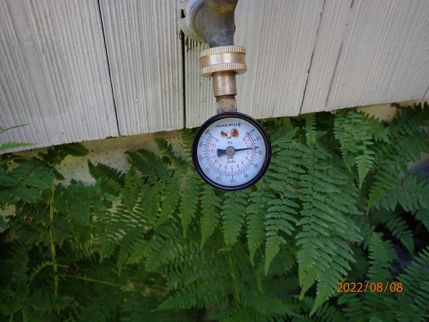


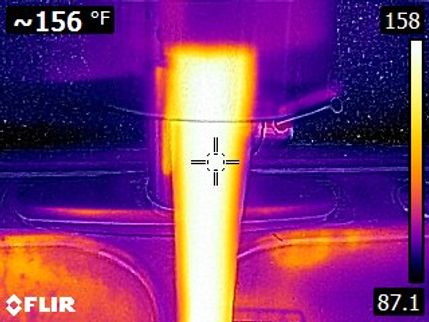
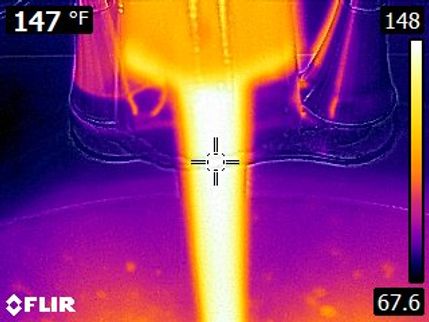
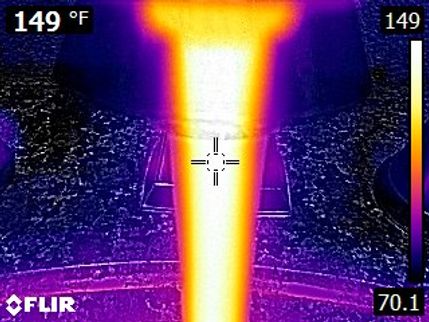
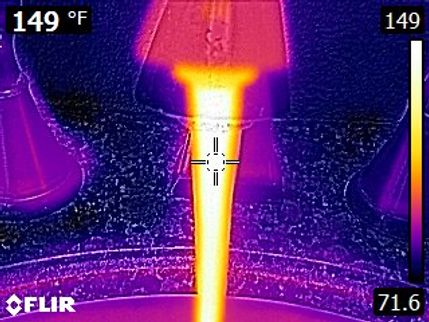
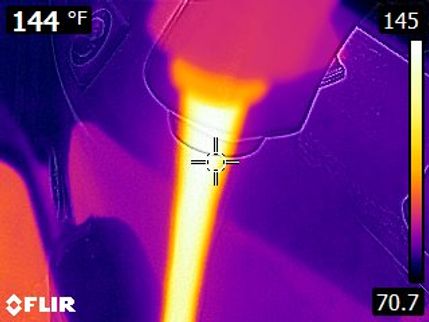



 (1).jpg)
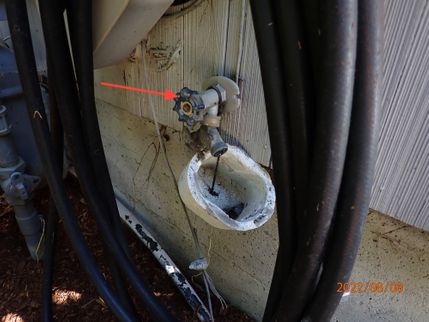


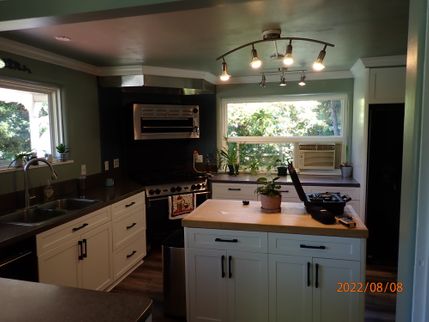
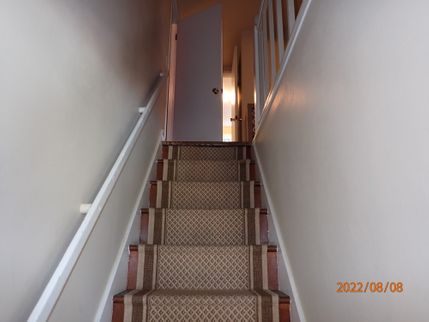

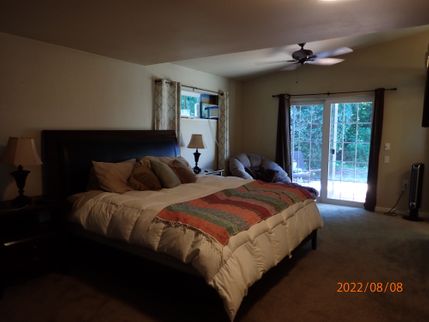
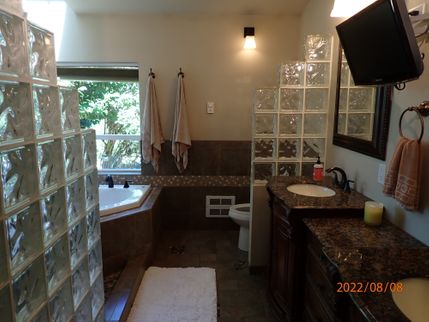
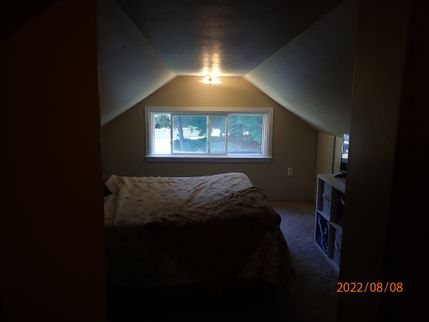

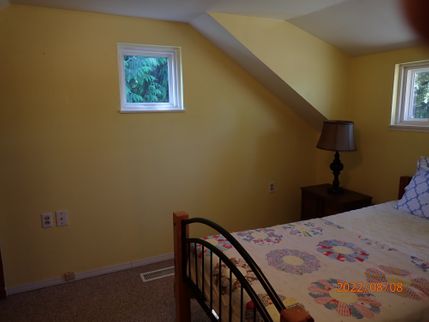
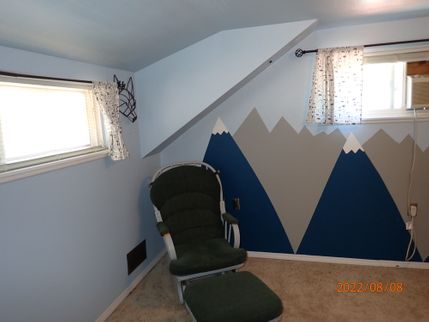
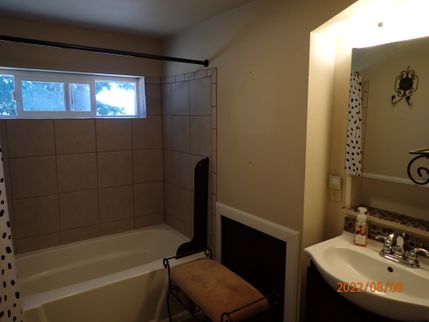
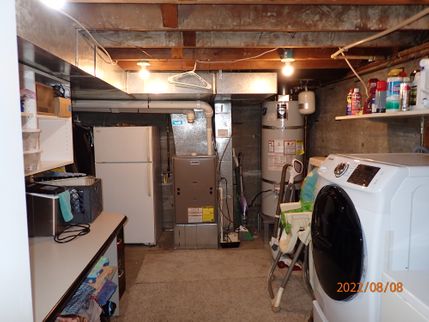
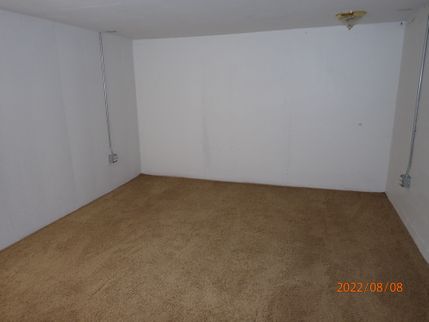
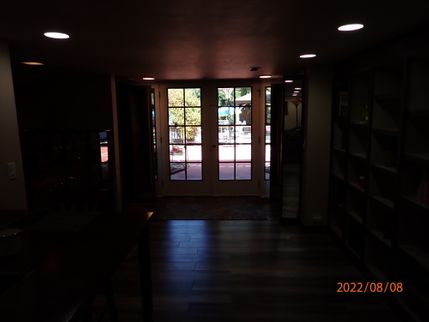

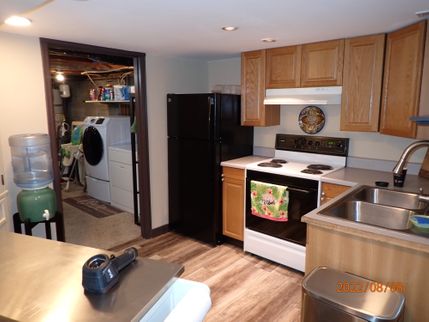

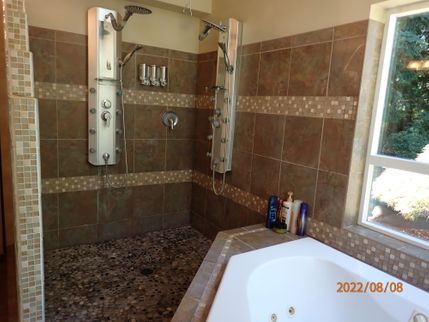
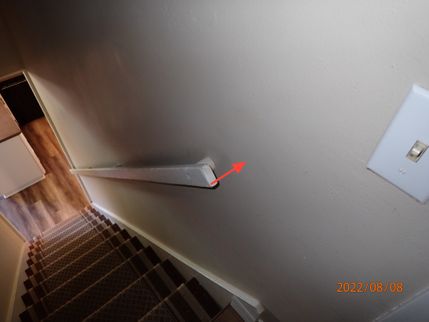
 (1).jpg)
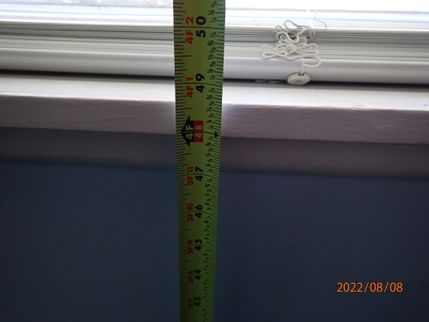

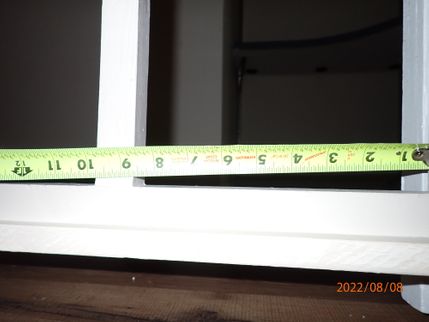

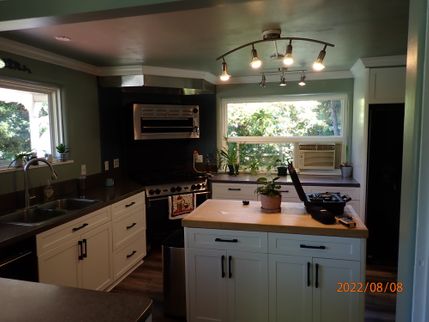
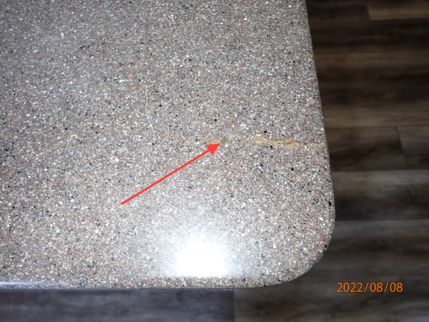
.jpg)
.jpg)
.jpg)


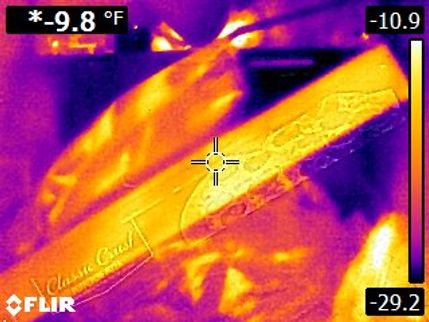
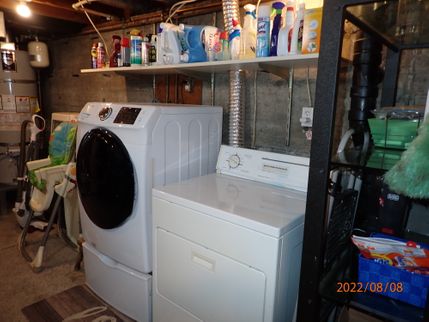
.png)
.png)

